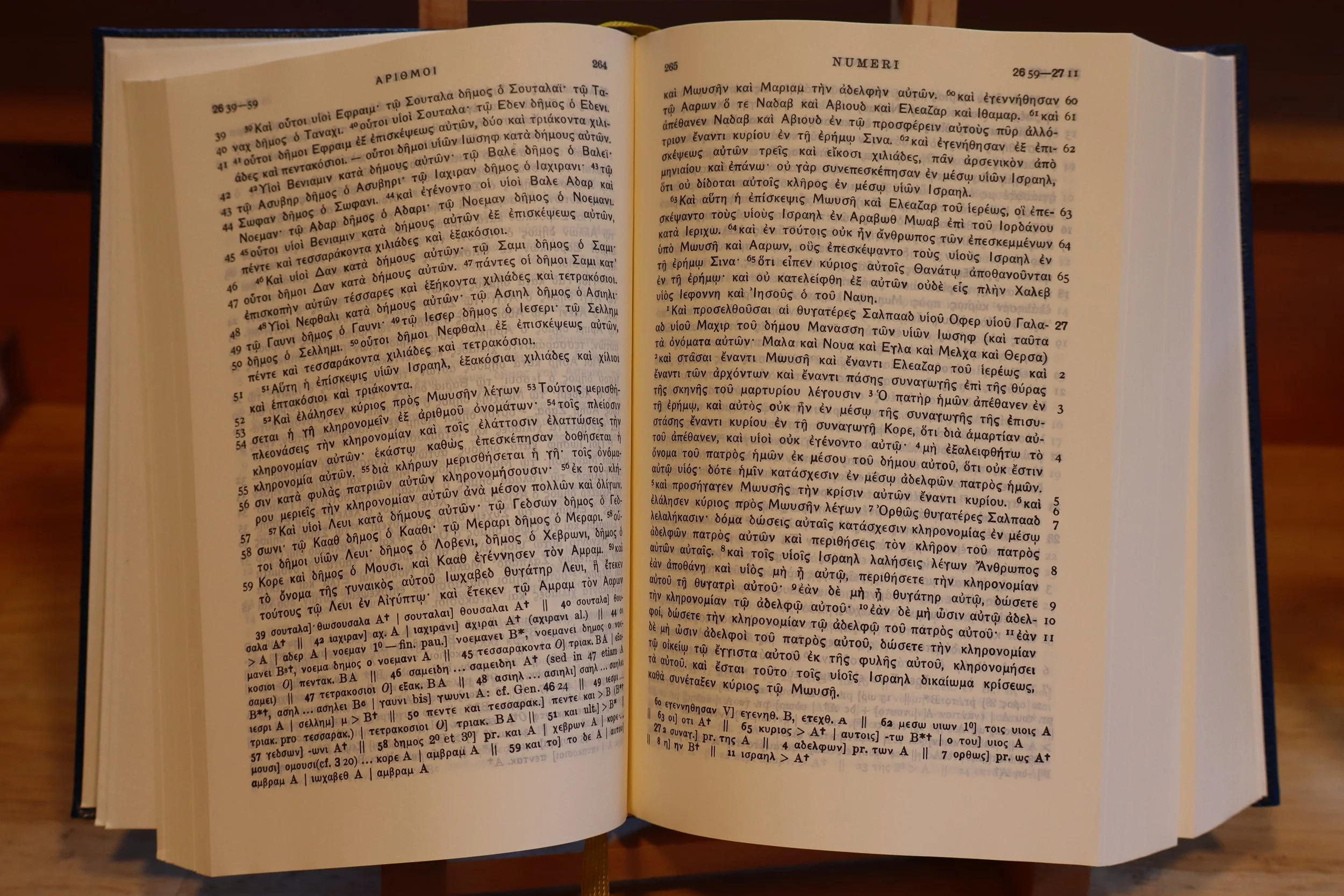Exploring the Rahlfs-Hanhart Septuaginta, Editio altera
The Rahlfs-Hanhart Septuaginta, known as "Editio altera," is a significant revision of Alfred Rahlfs' original critical edition of the Septuagint, first published in 1935. This updated edition was undertaken by Robert Hanhart in 2006, aiming to refine and enhance the scholarly resource used for Septuagint studies worldwide.
Historical Context and Importance
The Septuagint, or LXX, represents the Greek translation of the Hebrew Bible used by Hellenistic Jews and later by early Christians. Its translation began around the 3rd century BCE, becoming crucial not only for liturgical purposes but also for theological scholarship due to its use in the New Testament. Alfred Rahlfs' edition had been a cornerstone for researchers since its initial release, serving as a primary text for understanding the Greek Old Testament. The "Editio altera" by Robert Hanhart, an internationally recognized scholar in Septuagint studies, further solidifies this text's role in biblical scholarship.
Key Features of the Editio altera
Textual Corrections and Enhancements: Hanhart's revision corrects over a thousand minor errors from Rahlfs' earlier edition, including misprints and textual inconsistencies. These corrections span both the Greek text itself and the critical apparatus, ensuring higher accuracy for scholars and theologians.
Critical Apparatus: The edition includes an extensive critical apparatus that notes variants from the primary manuscripts used by Rahlfs, namely the Codices Vaticanus, Sinaiticus, and Alexandrinus. Hanhart expanded this apparatus by incorporating additional manuscript evidence, thus providing a more comprehensive view of textual variants.
Introductions and Explanatory Notes: The book features introductions in multiple languages - German, English, Latin, and Modern Greek - providing context about the Septuagint's history, its significance, and the methodology behind the edition's compilation. This multilingual approach makes the text accessible to a broader audience.
Scholarly Recognition: The Rahlfs-Hanhart edition is often considered the gold standard for classical Biblical textual scholarship, praised for its readability, portability, and academic rigor. It is lauded for being an essential tool in the study of the Old Testament and its influence on the New Testament's scriptural quotations.
Editorial Philosophy: While the core text remains loyal to Rahlfs' initial work, Hanhart's revisions reflect advancements in textual criticism and newly discovered manuscripts, ensuring the edition remains relevant to contemporary scholarship.
Availability and Impact
The "Editio altera" is published by the Deutsche Bibelgesellschaft and is available in hardcover, making it a durable tool for both academic and personal study. Its impact is seen in theological education, biblical research, and among those interested in the historical development of biblical texts. The edition has been well-received for providing a reliable, scholarly access to the Greek Old Testament at a reasonable price, fulfilling Rahlfs' original intent of aiding ministers and students in their studies.
The Rahlfs-Hanhart Septuaginta, Editio altera, stands as a testament to the ongoing scholarly pursuit of understanding ancient biblical texts. Through meticulous revision, this edition continues to be an invaluable resource for anyone engaged in the study of biblical languages, theology, or the history of the Christian and Jewish scriptures.
For those interested in diving deeper into the Greek text of the Old Testament, this edition is indispensable, blending historical accuracy with modern textual criticism to provide a comprehensive view of one of the world's most influential texts.


